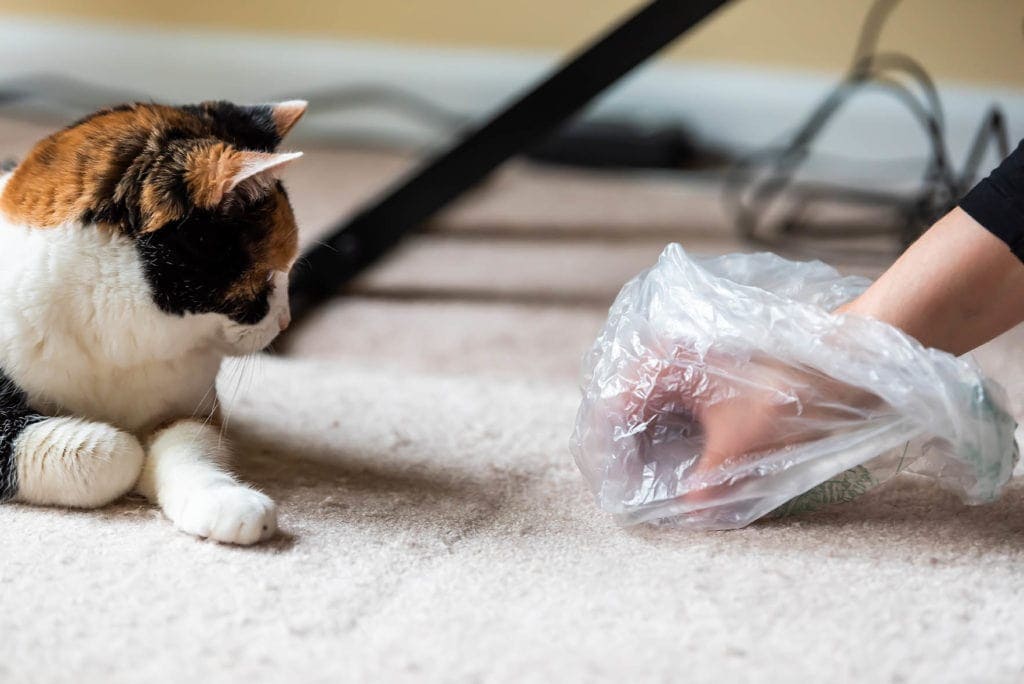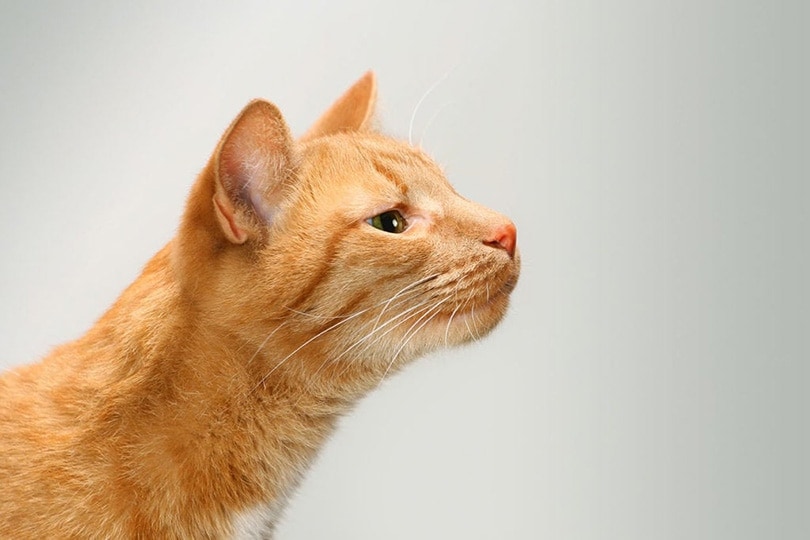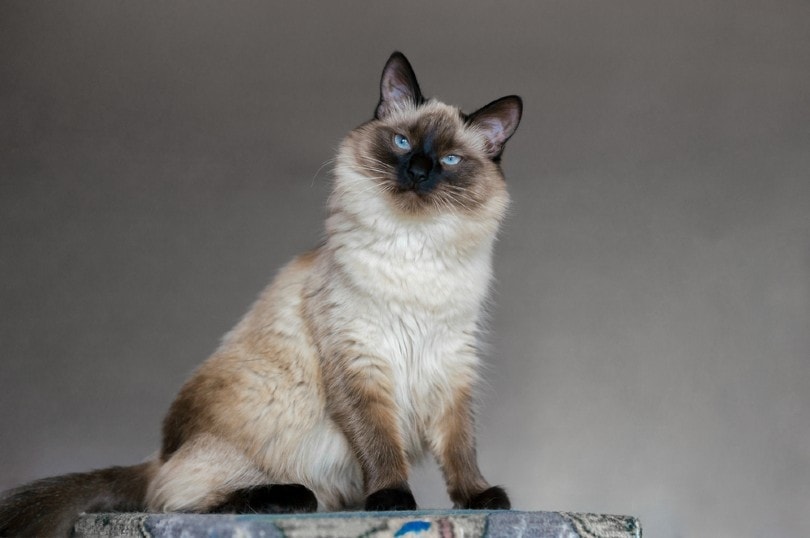Chartreux vs British Shorthair: Main Differences (With Pictures)
Updated on
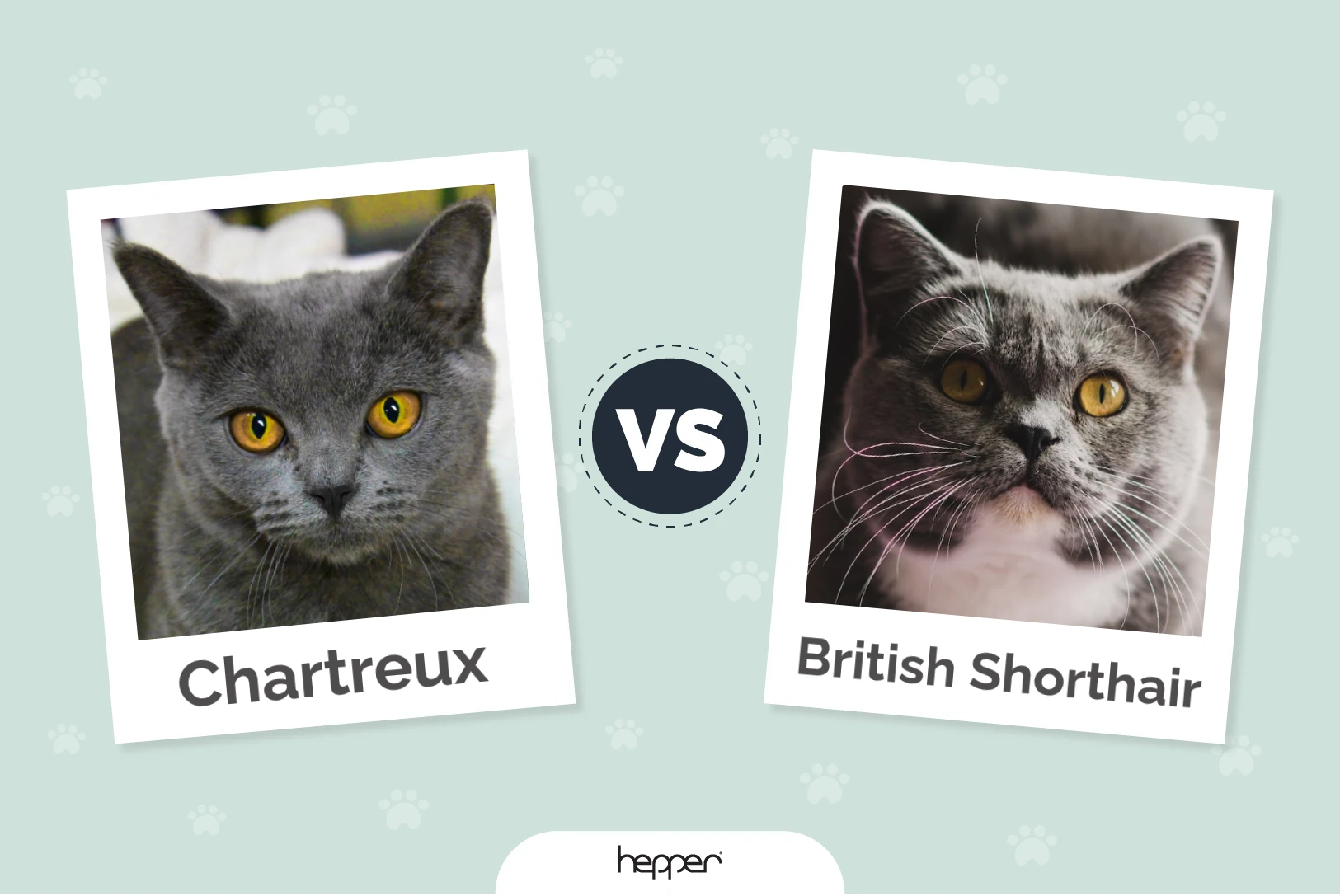
If you’ve looked at pictures of the Chartreux and British Shorthair, you may have been left a bit confused. These two cat breeds often look very alike, and it’s easy to mistakenly assume that they’re the same breed because the Chartreux is known for their blue coat, which they share with the traditional British Shorthair. The breeds also share a similar eye color. However, the British Shorthair comes in a wide range of other colors and even patterns, whereas the Chartreux does not.
Both the Chartreux and British Shorthair are often described as teddy bears because of their chunky bodies and friendly personalities. Both breeds have been around for centuries, with the British Shorthair being one of the oldest recognized breeds in the world. However, these two sociable breeds come from different parts of Europe, with the Chartreux being a French breed and the British Shorthair a British one.
Although similar in appearance and personality, it’s easy to spot their differences when you know what to look for. So, let’s take a closer look.
Visual Differences
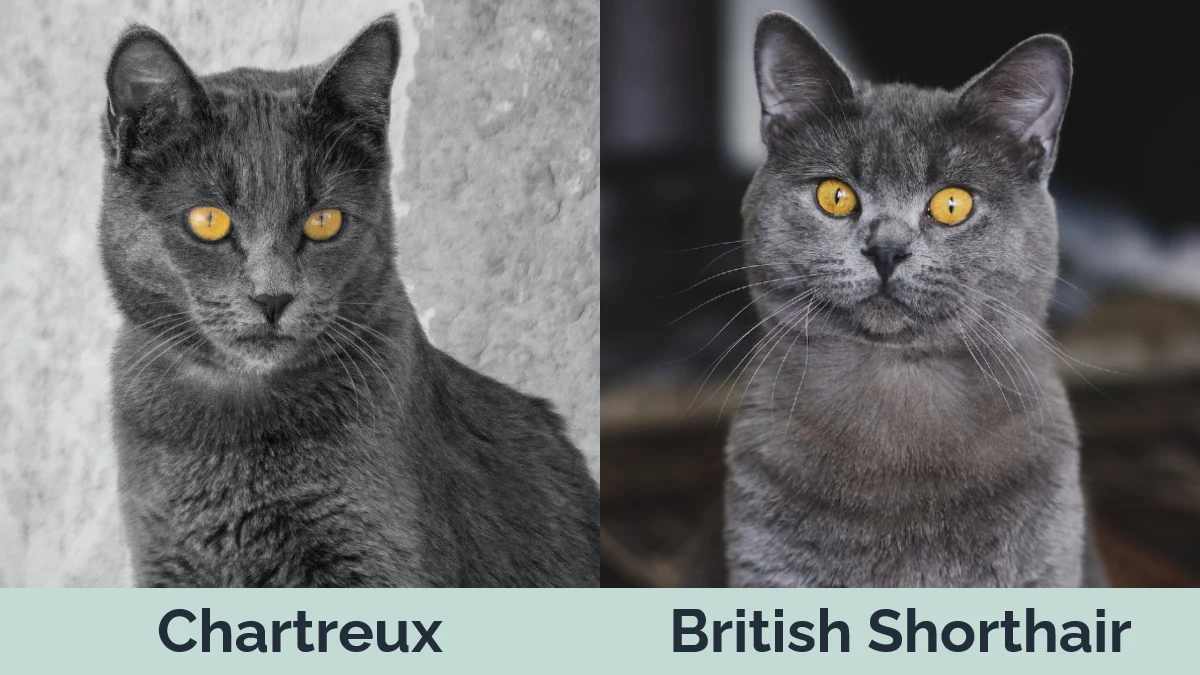
At a Glance
- Average height (adult): 9–11 inches
- Average weight (adult): 6–12 pounds
- Lifespan: 11–15 years
- Intelligence: High
- Grooming needs: Moderate
- Family-friendly: Yes
- Other pet-friendly: Yes
- Average height (adult): 12–14 inches
- Average weight (adult): 7–17 pounds
- Lifespan: 15–20 years
- Intelligence: High
- Grooming needs: Moderate
- Family-friendly: Yes
- Other pet-friendly: Yes
Chartreux Overview
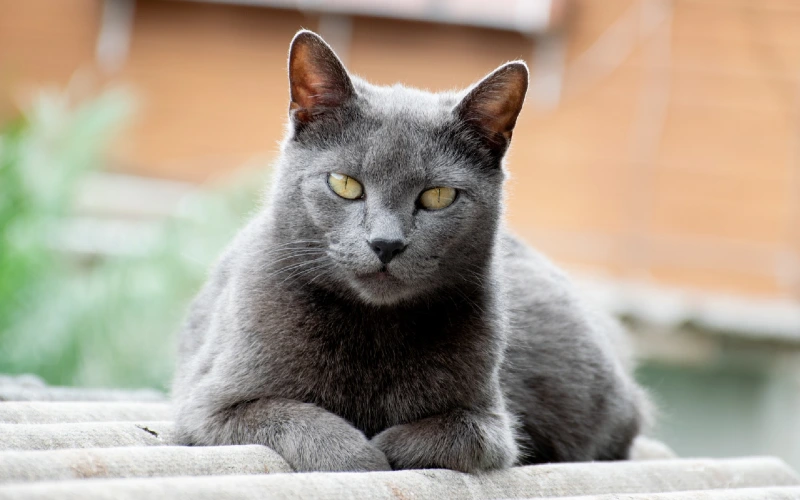
The first written document mentioning the Chartreux dates back to 1558, but many believe that this breed was first brought to France in the 13th century. Regardless, this is an old breed that has experienced the highs and lows of life throughout the centuries. Although the Chartreux was saved from extinction, they are a fairly rare breed, with few breeders left today, making them very expensive.
Appearance and Personality
The Chartreux is a gorgeous breed with short, solid blue-gray, woolly coats. They have round faces, big copper or gold eyes, and ears that are closer together than that of the British Shorthair. They have muscular, medium-sized bodies on top of short, slender limbs and round paws.
This breed has a wonderful personality that is calm and friendly. They aren’t very vocal but use their body language to communicate well. They’re affectionate, very intelligent, and somewhat playful. They appreciate attention and love a cuddle every now and then. They’re independent and able to entertain themselves.
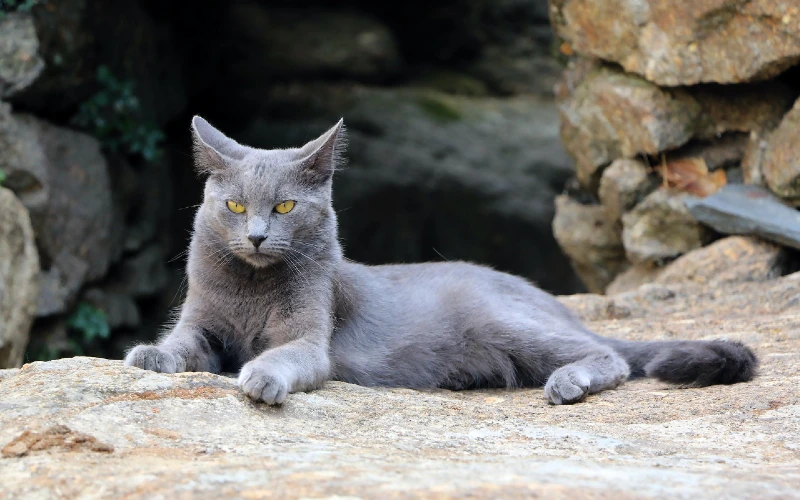
Are They Good with Children and Other Pets?
If you’ve got a busy home with children and other pets, you’ll have to do research, as not all cat breeds cope well in that kind of environment. However, the Chartreux is an excellent choice because they’re good with children and although they enjoy attention, they don’t demand it. They’re good-natured, patient, and adjust well to other pets when introduced properly.
Although great family cats, they also do well in apartments and with seniors. They’re quiet and low energy enough to not bother the neighbors and enjoy stability and routine.
Chartreux Cat Care
Chartreux cats aren’t hypoallergenic and will leave their hair lying around the house and on their favorite napping spots. They tend to shed their short, woolly coats in spring and will require frequent brushing around once or twice a week.
Chartreux cats aren’t the biggest water lovers but do well with the occasional bath when necessary. However, their coats are water-repellent, so getting them fully wet and full of shampoo can be a bit of a task.
Chartreux cats aren’t high-energy and can entertain themselves. Therefore, they don’t require much exercise. They were bred to catch rats, though, and have that natural instinct to catch and hunt. Adding toys that move to their playtime will spark their interest.
These intelligent cats are easy to train and enjoy mental stimulation. Providing them with food puzzles and teaching them simple tricks is another way to add a bit of fun to their routine.

Are Chartreux Cats Healthy?
Thankfully, there isn’t too much to worry about health-wise when adding a Chartreux to your family because they’re a pretty healthy breed, which commonly lives to the age of 15 years. Of course, as with all pets, they are prone to a few health problems. Most commonly seen in the Chartreux breed are polycystic kidney disease, luxating patella, and urinary tract issues.
Suitable For:
The Chartreux is a good-natured, calm breed that does well with families and individuals of all ages. They have patience for children and adjust well to other pets. They enjoy attention but don’t demand it and are highly sociable. They aren’t high-maintenance cats, have moderate grooming needs, and are independent enough to be on their own for a few hours.
Pros & Cons of Owning a Chartreux Cat
- Calm and friendly
- Non-demanding
- Does well with children and other pets
- Moderate grooming needs
- Healthy
- Very expensive
- Difficult to find in the USA due to their rarity
British Shorthair Overview
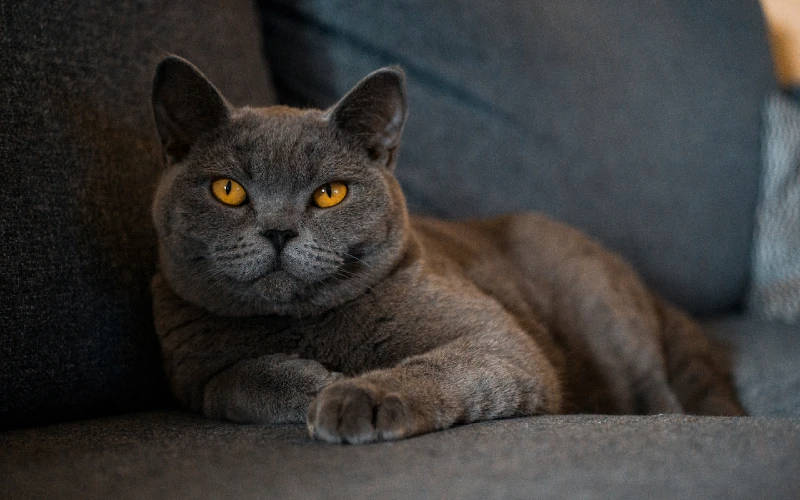
The British Shorthair dates back even further than the Chartreux and is one of the oldest cat breeds in the world, having been first introduced to the UK by the invading Romans. It was a British Shorthair that ultimately won the first-ever organized cat show in London in 1871.
This breed was also threatened with extinction by the end of the second world war but was restored by passionate breeders. Today, the British Shorthair is once again one of the most sought-after cat breeds in the UK and around the world.
Appearance and Personality
The British Shorthair only reaches maturity at the age of #, which is when they finally reach their full size of around 12–14 inches in height and 7–17 pounds in weight. These medium to large cats are sturdy and have thick legs, unlike the Chartreux cat’s slender legs. They have round heads, ears that are wide apart, and big eyes that are typically orange or amber in color. However, other colors are common, depending on the color of the cat’s coat.
Traditional British Shorthairs have blue coats, but they also come in white, black, red, orange, cream, gray, beige, chocolate, fawn, and lilac and can be patterned. Their coats are thick and short but don’t have the woolly texture as a Chartreux does.
This breed is friendly, somewhat affectionate, intelligent, and easygoing. They’re sociable and loyal and are a great option for first-time cat owners.
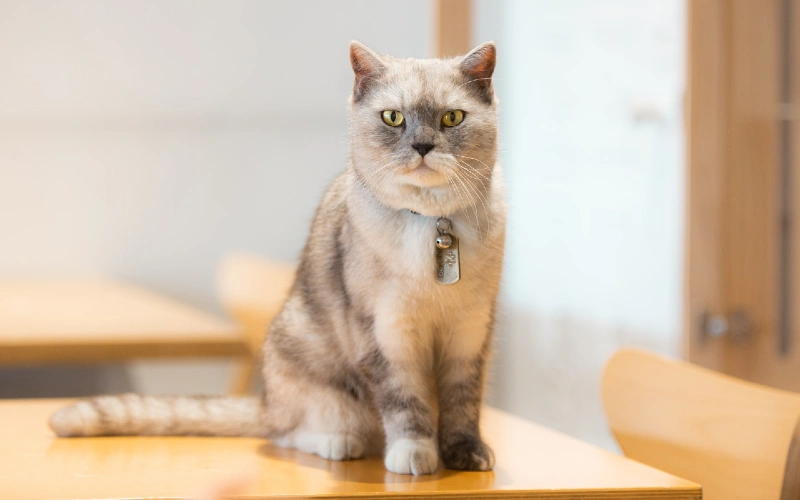
Are They Good with Children and Other Pets?
The British Shorthair is a great addition to just about any home because they thrive within the family setting as well as within a smaller household. This breed is great with children and enjoys interaction. They’re tolerant and patient and aren’t the type of breed that runs away from playtime with the family.
This breed also gets on well with other pets, but a proper introduction is necessary, as with all new pets. These cats also do well in apartments because they’re not excessively energetic. They don’t need to be let out into a yard to run, climb, and play. Instead, they’ll happily—and quietly—entertain themselves. However, if you’re looking for a cat that is going to cuddle you all day long, the British Shorthair may not be what you’re looking for.
British Shorthair Cat Care
British Shorthairs are good at maintaining their own coats due to its short length, but to remove those loose hairs, a weekly brush is necessary. Of course, as with all cats, it’s important to trim their nails, feed them a high-quality diet, and stay on top of their dental care. Vaccinations, flea treatments, and other preventative care are a must to ensure a long and healthy life for your cat.
Extra exercise isn’t necessary for a British Shorthair as they’ll be able to burn their energy off by climbing up and scratching at their cat tree and perches. Playtime is an important part of their routine, and they love toys that move and are interactive. Feather wands, balls, and mice toys are some toy types this breed enjoys.
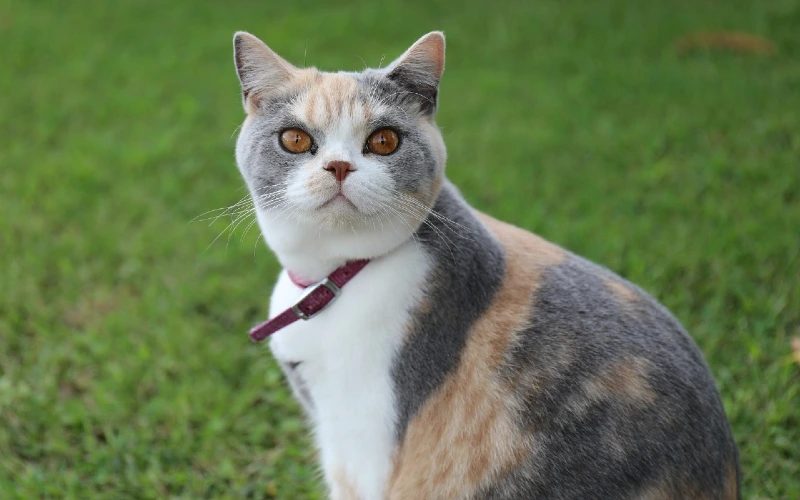
Are British Shorthairs Healthy?
British Shorthairs can live up to 20 years and are a healthy breed. However, they still need regular checkups with the veterinarian to prevent any possible disease or problem early. A good diet and correct portion sizes will contribute to a healthy cat, as well as getting them active during playtime.
Some health issues that British Shorthairs can be prone to are hypertrophic cardiomyopathy, urinary tract issues, and kidney disease.
Suitable For:
British Shorthairs are suitable for anyone who can give them the love and attention they need. They’ll do well as part of a large family with children and other pets or in an apartment with an individual. They need toys and cat furniture for entertainment and play, but they don’t require excessive exercise. Their coats are short and dense and are generally well-maintained by the cat, but occasional grooming is necessary.
Pros & Cons of Owning a British Shorthair Cat
- Available in various colors and patterns
- Can live in any size home
- Gets on well with children and other pets
- Easy to maintain
- Healthy
- Mostly quiet
- Not overly affectionate
Which Breed Is Right for You?
The Chartreux and British Shorthair have clear differences but share many similarities too. Both breeds have blue coats that are short and big copper or orange eyes. However, the British Shorthair also comes in other coat and eye colors. They have chunky bodies that can be medium in size, but the British Shorthair tends to grow larger. If you’re looking for a larger cat breed that is easy to manage, the British Shorthair might be for you.
Both breeds have easygoing personalities that are calm and sociable. They both do well with children and other pets and can be kept in an apartment. They’re both healthy breeds with few health risks. However, a British Shorthair can outlive a Chartreux by 5 years. If the cost of the kitten you want is of concern, the British Shorthair is the better option as they’re more affordable than the Chartreux due to the availability of the breed.
Featured Image Credit: Left – Chartreux (Camille, Unsplash) | Right – British Shorthair (Umar Kashif, Unsplash)


